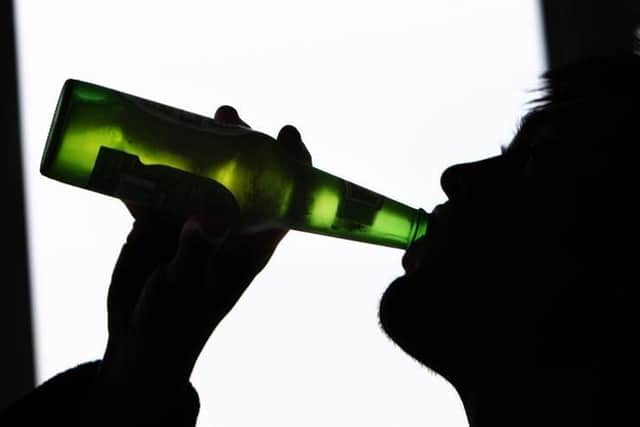Alcohol deaths Scotland: If MUP is effective, then why are alcohol deaths in Scotland increasing?
The latest alcohol-specific deaths statistics raise an interesting question – if public health policies are effective, why is the number of deaths increasing?
Public Health Scotland’s (PHS) meta analysis over 40 independent studies concluded the Scottish Government’s minimum unit pricing (MUP) policy was “effective”.
Advertisement
Hide AdAdvertisement
Hide AdAccording to PHS, the meta-analysis shows MUP “has reduced deaths directly caused by alcohol consumption by an estimated 13.4 per cent and hospital admissions by 4.1 per cent, with the largest reductions seen in men and those living in the 40 per cent most deprived areas”.


The report’s authors say this equates to 150 fewer deaths and 400 fewer admissions in 2022/23, using England – which has not implemented a MUP policy – as a control.
And yet, deaths have increased since 2018, when the policy was first implemented.
That leaves us with two possible conclusions – either MUP is ineffective, or it is not effective enough.
Given the numerous studies of MUP, it could be argued it is unlikely the former is true.
If the latter is true, it leaves the Scottish Government with two options – back down or double down.
Campaigners have already called for the base rate of MUP, currently set at 50p per unit, to be increased to at least match inflation.
Opponents of MUP, however, will pounce on the latest statistics as proof that MUP is not effective enough to justify such massive state interference in a market, and the consequential disruption to the alcohol industry – currently worth around £8.1 billion to the Scottish economy, although 60 per cent of this is from whisky exports.
Advertisement
Hide AdAdvertisement
Hide AdThere is one aspect missing from much of the discourse around drink deaths in Scotland, though – what worked in the past?
Unlike drug deaths, which have seen a steady, almost continuous increase from the mid-1990s to today’s levels, Scotland has reduced the number of annual drink deaths before.
So what happened?
From 1994 to 2006, Scotland’s alcohol deaths increased from less than 600 to over 1,400, but then, from 2006 to 2012, there was a steady decrease to back under 1,000 deaths a year.
The answer is likely poverty. Repeated studies, including NRS’s latest annual report, show that drink – and drug – deaths disproportionately affect those living in the lowest percentiles of income in Scotland. As the economic consequences of the 2008 financial crisis began to take hold, so too did the grip of alcohol dependency on vulnerable communities.
From 2012 onwards, there has been a steady increase up to today’s figure of more than 1,200 deaths per year due to alcohol.
As the bite of the recession caused by the coronavirus pandemic, and the current housing crisis, continue to take hold, it’s unlikely we’ll see a reduction in drink deaths to pre-2012 levels anytime soon, with or without MUP.
Comments
Want to join the conversation? Please or to comment on this article.